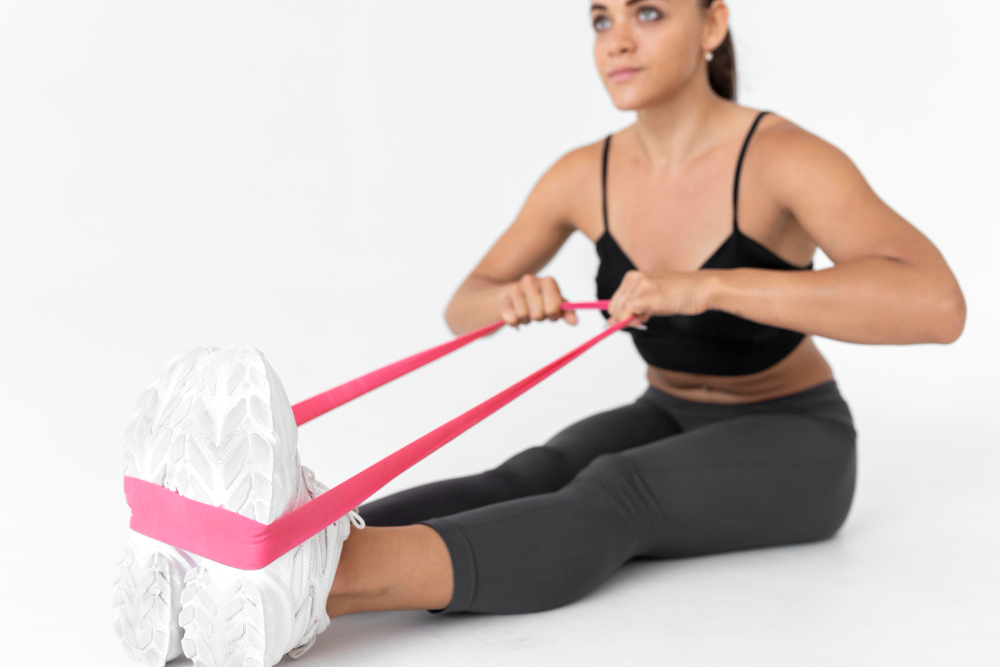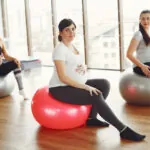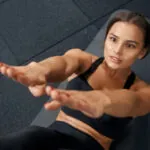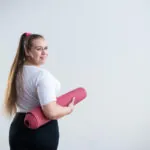Most seated glute exercises look more like warmups than real training. A few leg lifts here, a couple of half-hearted abductions there, and you’re left wondering if anything even happened. The problem isn’t the position, it’s the execution. The truth? With the right resistance and the right technique, seated resistance band exercises for glutes can hit just as hard as standing ones. Especially when you add a resistance band into the mix. Whether you’re stuck at a desk all day, dealing with an injury, or just want a low-impact way to train your backside, these moves actually do something, if you do them right.
What You Need
You don’t need a home gym. Just a few basics:
- Short loop resistance band: Go for medium or heavy tension. Light bands usually aren’t enough to challenge your glutes.
- Sturdy chair or bench: No wheels, no armrests, and definitely not your office swivel chair. You want stability so you can focus on the movement, not balance. If you want to take exercise into your office, try these office desk exercises.
- Yoga mat or non-slip surface (Optional): Helps keep your feet grounded and your chair from sliding.
The Best Seated Resistance Band Exercises for Glutes
Here’s the deal: not all seated band exercises are created equal. Some just go through the motions. The ones below? They work, but you need to focus on form, tension, and control.
1. Seated Banded Abductions
This is the go-to glute activation move, but most people butcher it.
- Sit tall or lean slightly forward (not slouched).
- Place the band just above your knees.
- Push your knees apart, hold for a second, and slowly return.
- Keep tension the entire time, don’t let your knees cave in.
Why it works: It targets the glute medius. The key muscle for hip stability and that outer glute shape.
2. Seated Banded Marches
Brings in stability and control.
- Sit tall, band around thighs.
- One leg at a time, lift your knee like you’re marching without leaning back.
- Keep hips level and control the descent.
Why it works: Glutes stabilize your hips during movement, and this challenges them in a functional way.
3. Seated Kickouts (Alternating Legs)
Feels simple, until you slow it down.
- Sit back slightly, feet flat.
- Band around lower thighs or ankles.
- Extend one leg straight out while pressing against the band, then return. Alternate.
Why it works: Engages glutes and hamstrings, plus challenges hip control.
4. Seated Clamshells (with Twist)
Modified version of the floor move, but surprisingly effective.
- Sit with feet together, knees bent, band above knees.
- Rotate one knee out to the side while keeping your feet together.
- Slow and controlled, no bouncing.
Why it works: Great for glute medius and hip external rotation, especially for desk-bound folks.
Another muscle group that will improve your posture are quads. Check out how to use resistance bands for this muscle group.
Mistakes That Reduce Glute Activation
If you’re doing the moves and still not feeling it, check for these common mistakes:
Rushing the Reps
Speed kills tension. Slowing down forces the glutes to do the work instead of letting momentum take over.
Using a Band That’s Too Light
If you’re not struggling by the last few reps, it’s not doing enough. Upgrade your band tension.
Letting the Quads or Hip Flexors Take Over
If your legs are doing all the work, your glutes are checked out. Re-engage by adjusting your posture and focusing on the squeeze.
Slouching or Leaning Back Too Far
Posture matters. A slight forward lean helps the glutes stay engaged. Slouching shifts the work elsewhere.
Try these exercises at our Morganton gym and enjoy the 3-day free pass that you can claim on our Morganton page.
Final Thoughts
You don’t need a squat rack or fancy gym setup to train your glutes. You just need a resistance band, a chair, and a little intention. Seated resistance band exercises for glutes aren’t a shortcut or a downgrade. Done right, they’re a legit way to build strength, improve stability, and stay consistent, even when life keeps you in a chair.





